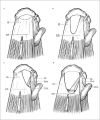Clinical and biological aspects of rotator cuff tears
- PMID: 23888289
- PMCID: PMC3711705
- DOI: 10.11138/mltj/2013.3.2.070
Clinical and biological aspects of rotator cuff tears
Erratum in
- Muscles Ligaments Tendons J. 2014 Oct;3(4):359
Abstract
Rotator cuff tears are common and are a frequent source of shoulder pain and disability. A wide variation in the prevalence of rotator cuff tears has been reported. The etiology of rotator cuff tear remains multifactorial and attempts to unify intrinsic and extrinsic theories tried to explain the etiopathogenesis of rotator cuff tears. Knowledge of the etiopathogenesis of rotator cuff tears is important to improve our therapies, surgical techniques and promote tendon repair. Several strategies have been proposed to enhance tendon healing and recently research has focused on regenerative therapies, such as Growth Factors (GFs) and Plasma Rich Platelet (PRP), with high expectations of success.
Keywords: growth factors; platelet rich plasma; rotator cuff tears; shoulder.
Figures
References
-
- Lehman C, Cuomo F, Kummer FJ, Zuckerman JD. The incidence of full thickness rotator cuff tears in a large cadaveric population. Bull Hosp Jt Dis. 1995;54:30–31. - PubMed
-
- Sher JS, Uribe JW, Posada A, Murphy BJ, Zlatkin MB. Abnormal findings on magnetic resonance images of asymptomatic shoulders. J Bone Joint Surg Am. 1995;77:10–15. - PubMed
-
- Milgrom C, Schaffler M, Gilbert S, Van Holsbeeck M. Rotator-cuff changes in asymptomatic adults. The effect of age, hand dominance and gender. J Bone Joint Surg Br. 1995;77:296–298. - PubMed
LinkOut - more resources
Full Text Sources
Other Literature Sources
Medical
Research Materials

